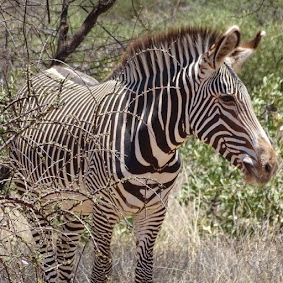Evolution
by Margaret Ross
The corpses weigh nothing, nearly nothing, even your breath is breeze enough to scatter them
We steamed them in tupperware with a damp sponge then we tweezed the stiff wings open
The wing colors would brush off if you touched them
He wanted to paper the walls with butterflies
Each came folded in its own translucent envelope
Evolution called itself a natural history store
It sold preserved birds, lizards, scorpions in lucite, bobcat with the eyes dug out and glass ones fitted, head turned
Also more affordable bits like teeth and peacock feathers, by the register a dish of raccoon penis bonesThis was on Spring
The sidewalks swarmed with bare-armed people there to see the city
You could buy your own name in calligraphy or written on a grain of rice by someone at a folding table
Souvenir portraits of taxis and the Brooklyn Bridge lined up on blankets laid over the pavementThe artist we were pinning for had gotten famous being first to put a dead shark in a gallery
For several million dollars each he sold what he described as happy pictures which were rainbow dots assistants painted on white canvases
I remember actually thinking his art confronted death, that’s how young I was
We were paid per butterfly
The way we sat, I saw the backs of the other pinners’ heads more than their faces
One’s braids the color of wine, one’s puffy headphones, feather cut and slim neck rising from a scissored collar, that one bought a raccoon penis bone on lunch break
 Mostly we didn’t speak
Mostly we didn’t speak
Another life glimpsed in a detail mentioned, leaving or arriving
She lived with a carpenter who fixed her lunches
Come fall I’d be in college
The deli next door advertised organic toast and raisins on the vine
Mornings, I tried to learn from eyeliner and shimmer on faces near mine on the train
Warm fogged imprint on a metal pole where someone’s grip evaporated
Everyone looking down when someone walked through asking for help
At Evolution, talk radio played all day
A cool voice giving hourly updates on the bombing of another city which it called the conflict
The pinner in headphones sometimes hummed or started a breathy lyric
“Selfish girl—”I watched my tweezers guide the poisonous exquisite
blue of morpho wings
Their legs like jointed eyelashes
False eyes on the grayling wingtips
to protect the true face
The monarch’s wings like fire pouring through a lattice
#
(Originally published in Poem-a-Day on October 22, 2020, by the Academy of American Poets.)
 |
| Monarch sanctuary in Mexico |
Alert to readers: Expect AnimalBeat II posts to resume next month after exploration of alternative blog platforms. (Till then, stay safe and VOTE on Nov. 3!)


















